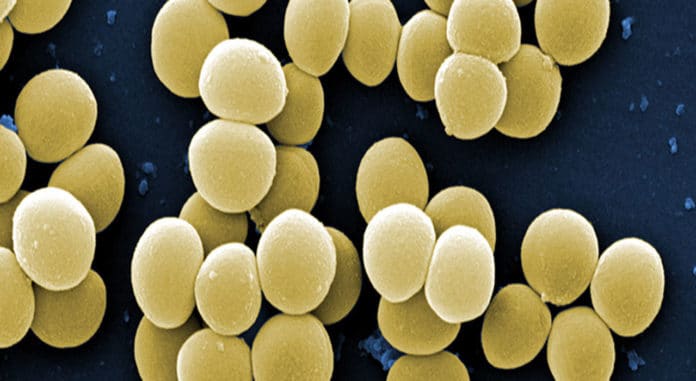Staphylococcus aureus” – also known as “golden staph,” is an opportunistic pathogenic bacterium that can develop in highly variable environmental conditions. It can be found in the nostrils of 25 to 30% of the population.
Its great adaptability depends especially on a protein (an RNA helicase) involved in the degradation of RNA messengers that have become useless.
However, the bacterium can take advantage of a drop in immunity or a surgical operation to trigger a real infection.
To understand the molecular basis of this phenotype, scientists from the University of Geneva conducted a large genetic screen isolating 82 independent suppressors of cold growth. They discovered that it contributes to another physiological process, without any apparent link to the first: the synthesis of the fatty acids that are the essential constituents of the bacterial membrane.
Patrick Linder, a professor in the Department of Microbiology and Molecular Medicine in UNIGE’s Faculty of Medicine, said, “My laboratory studies a protein, RNA helicase, which plays an important role in golden staph’s ability to adapt to very different environments. When the environment changes, the bacterium has to be able to synthesize new proteins that are more suitable and stop the production of others that are no longer useful. The helicase we’re interested in – called CshA – is involved in the degradation of the RNA, those molecules derived from the DNA, and used in protein synthesis.”
Scientists observed that in the absence of the helicase, the cultured bacteria could no longer form colonies if the temperature dropped below a certain threshold (around 25°C).
Scientists also conducted several experiments for a better understanding of the link between the golden staph’s sensitivity to cold, the degradation of the RNA, and the adaptation capacity. They discovered that the same helicase is probably also required in another physiological process, namely the synthesis of fatty acids, which are the constituents of bacterial membranes.
Vanessa Khemici, a researcher in Patrick Linder’s laboratory, said, “Using cultured golden staph stripped of helicases, we succeeded in isolating 82 gene mutations (appearing spontaneously in many different bacteria), which meant that their holders regained the ability to form colonies at 25°C. We identified almost all the affected genes, and no less than two thirds of two-thirds involved in the fatty acid synthesis.”
The study also revealed that the lack of helicase has the effect of deregulating the fatty acid synthesis and decreasing the flexibility of the membrane when the temperature drops. This prevents the membrane from fulfilling its functions accurately and the bacterium from growing.
In a second step, each of the 82 mutations succeeded in its way in restoring the initial balance by acting on the different genetic levers involved in the fatty acid synthesis.
Linder said, “A section of the scientific community supports the idea that a future treatment against staphylococcus will involve a drug capable of inhibiting fatty acid synthesis, but there is a controversy about it because some studies contradict this point of view.”
Journal Reference:
- Vanessa Khemici et al. The DEAD-box RNA helicase CshA is required for fatty acid homeostasis in Staphylococcus aureus. DOI: 10.1371/journal.pgen.1008779
